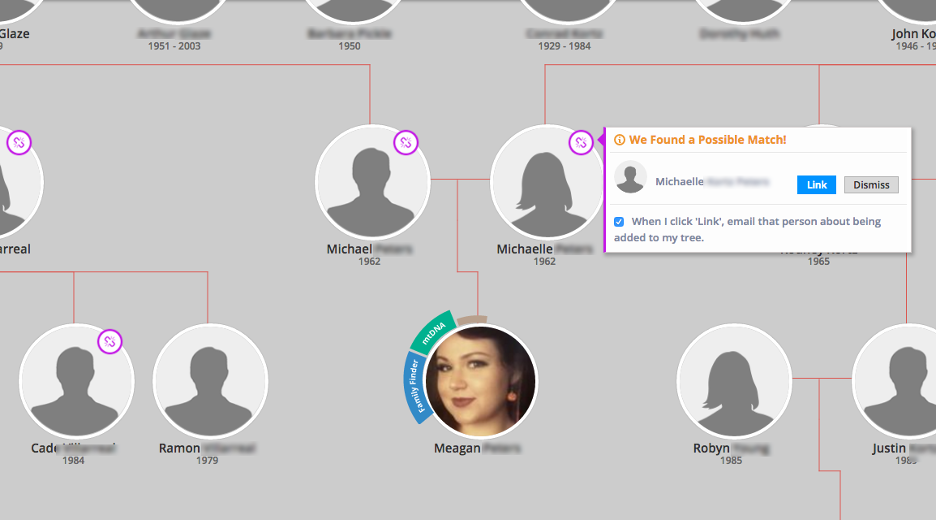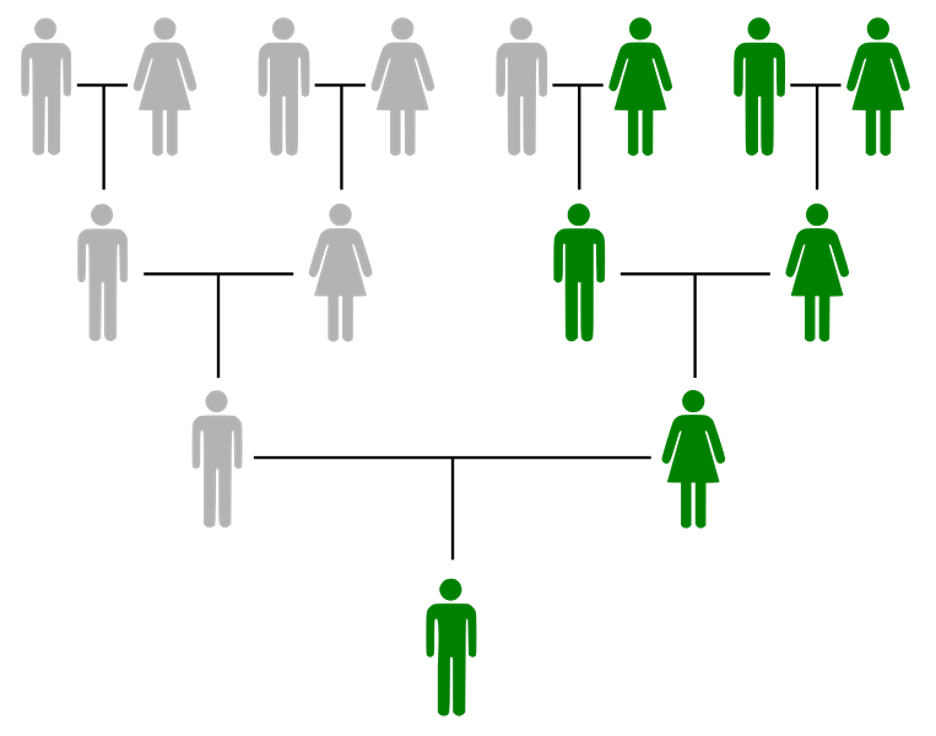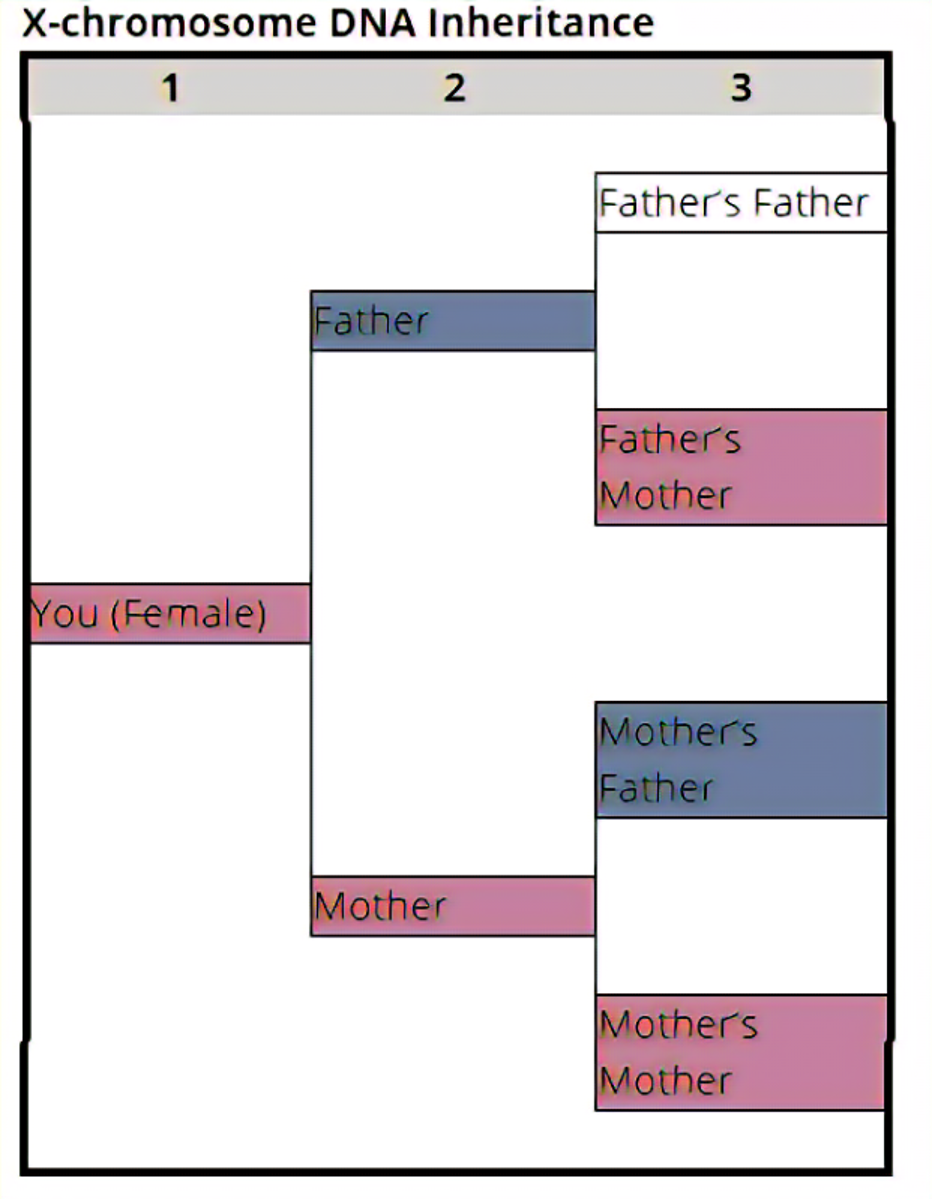What is an X DNA Match on Family Tree DNA?
If you have recently done a DNA test with Family Tree DNA, you may have seen that you have an X-DNA match. In this article, we'll explain what an X DNA match is and how to find out how that match is related to you.
There are many terms related to ancestry DNA tests, some of which can be confusing. One, in particular, might be an XDNA match on Family Tree DNA. What exactly is this type of match and how is it different from the other main sites?
AncestryDNA is Our Top Recommendation
After reviewing all of the top DNA products on the market, nothing comes close to AncestryDNA to help you discover your whole family story!
They give you so much more than any other family tree DNA kit, and let you connect to the places you're from in the world where your family story started, and even help you to discover living relatives you never knew you had!
For the most accurate family history research based on your DNA, sign up for AncestryDNA now!
Get AncestryDNA →The top sites such as AncestryDNA and 23andMe test our autosomal DNA for the most part. What then is so unique about XDNA and why might it be better in certain circumstances? As this post will show, XDNA can really open up our research options and even help determine how we are related to our matches.
What Is an XDNA Match on Family Tree DNA?
In the simplest of terms, an XDNA match on family Tree DNA indicates that you share at least one identical segment of DNA on your X chromosome with that person. Why is this important? Well to understand that first, we must realize that the X chromosome is one of the two sex chromosomes.

What It Means for Males:
In terms of sex chromosomes, males have one of each, both an X and a Y chromosome. It then becomes important to note that the X chromosome that we inherit comes from our mother and not our father. Why is this important?

The very simple answer is that if we have an XDNA match with another person then that person has to be on our mother's side of the family. This immediately eliminates the possibility of that connection being from your father's side.
What It Means for Females:
The inheritance of the X chromosome is slightly different if you are a female because they have two X chromosomes and no Y. One of these chromosomes comes from her father who received his complete X chromosome from his mother. The other X chromosome comes from her mother who passes a recombined X chromosome which is a combination of her own father's full X and her mother's recombined X.

This means a female with an XDNA match would have to look at both sides of her family tree to determine where the match would be. Depending on the amount of shared DNA on that chromosome she may be able to focus her search on specific grandparents' lines.
Males and Their XDNA Matches
It has already been established that males receive their one X chromosome from their mother so any matches must be on their maternal line. As females receive their XDNA from both of their parents this means we should look at both of our maternal grandparent's lines to find the match.
We know that XDNA does not pass from father to son so we know that our mother's paternal grandfather will not have supplied XDNA to us. This allows us to stop at that point in the tree when it comes to finding our match.
Our maternal grandmothers and paternal grandfather also would not have contributed any XDNA to us so we can stop at him as well. There are only specific ancestors from which our XDNA can be passed down when it comes to males.
Depending on the size of the shared XDNA segments we may not have to go too far back in our family tree to locate that common ancestor. If you are searching your XDNA matches trees you should be looking for common surnames.
It is vital for you and your match to have a well fleshed out accurate tree in order to accurately determine how you are related.
Females and Their XDNA Matches
Due to the fact that females receive XDNA from both sides of their family, we sadly can’t discount one of their family lines altogether. Once you get beyond a female's parents, however, the same inheritance pattern comes into play.
The first line that you can eliminate is that of your paternal grandfather. This is because he did not contribute any XDNA to his son, aka your father. This is also the case with your maternal grandfather's father and your maternal grandmother's paternal grandfather.
If the XDNA match is a high percentage the relative will be close in your family tree so again comparing trees may help. There are slightly more ancestral lines to check as a woman in search of the XDNA match but it is very possible giving work.
From Whom Do Males Inherit XDNA?
Just to give you a little head start here is a shortlist of the close ancestors who will have passed XDNA down to you as a male:
- Mother
- Both maternal grandparents
- Maternal grandfather's mother
- Both of your maternal grandmother's parents
From Whom Do Females Inherit XDNA?
As previously mentioned, females receive XDNA from both of their parents so they have a few more potential close ancestor X chromosome donors which include:
- Mother and father
- Both maternal grandparents
- Paternal grandmother
- Both of paternal grandmother's parents
- Both of maternal grandmother's parents
- Maternal grandfather's mother
You Might Be Related to Your XDNA Match in Multiple Ways
The XDNA is not always a perfect indicator of just one common ancestor that you share with a match. The fact is that sometimes we may be related to a match in more than one way. I, for instance, have a set of great-great grandparents who are also my great-great-great-grandparents through another line.
This can mean that you might have XDNA twice from the same people showing up in your XDNA and of course your autosomal DNA. Usually, we consider the closest relationship match to be the most important.
Therefore if you match as third cousins but are also technically fourth cousins through another line you would settle on being third cousins as this is the closest match.
Conclusion
The XDNA test matches can when used accurately really contribute along with solid genealogy in finding out how you are related to a match. The unique inheritance patterns set it apart from autosomal DNA with respect to being able to eliminate certain family lines.
As a result, you can completely ignore your father's line of the family when researching an XDNA match. You do not have any of his XDNA so it cannot have come from his branch of the family. Women get XDNA from both parents but they can eliminate their paternal grandfather's line among others.
Link To or Reference This Page
We spent a lot of time downloading, cleaning, merging, and formatting the data that is shown on the site.
If you found the data or information on this page useful in your research, please use the tool below to properly cite or reference Name Census as the source. We appreciate your support!
-
<a href="https://namecensus.com/blog/what-is-an-x-dna-match-on-family-tree-dna/">What is an X DNA Match on Family Tree DNA?</a>
-
"What is an X DNA Match on Family Tree DNA?". NameCensus.com. Accessed on April 23, 2024. https://namecensus.com/blog/what-is-an-x-dna-match-on-family-tree-dna/.
-
"What is an X DNA Match on Family Tree DNA?". NameCensus.com, https://namecensus.com/blog/what-is-an-x-dna-match-on-family-tree-dna/. Accessed 23 April, 2024
-
What is an X DNA Match on Family Tree DNA?. NameCensus.com. Retrieved from https://namecensus.com/blog/what-is-an-x-dna-match-on-family-tree-dna/.
